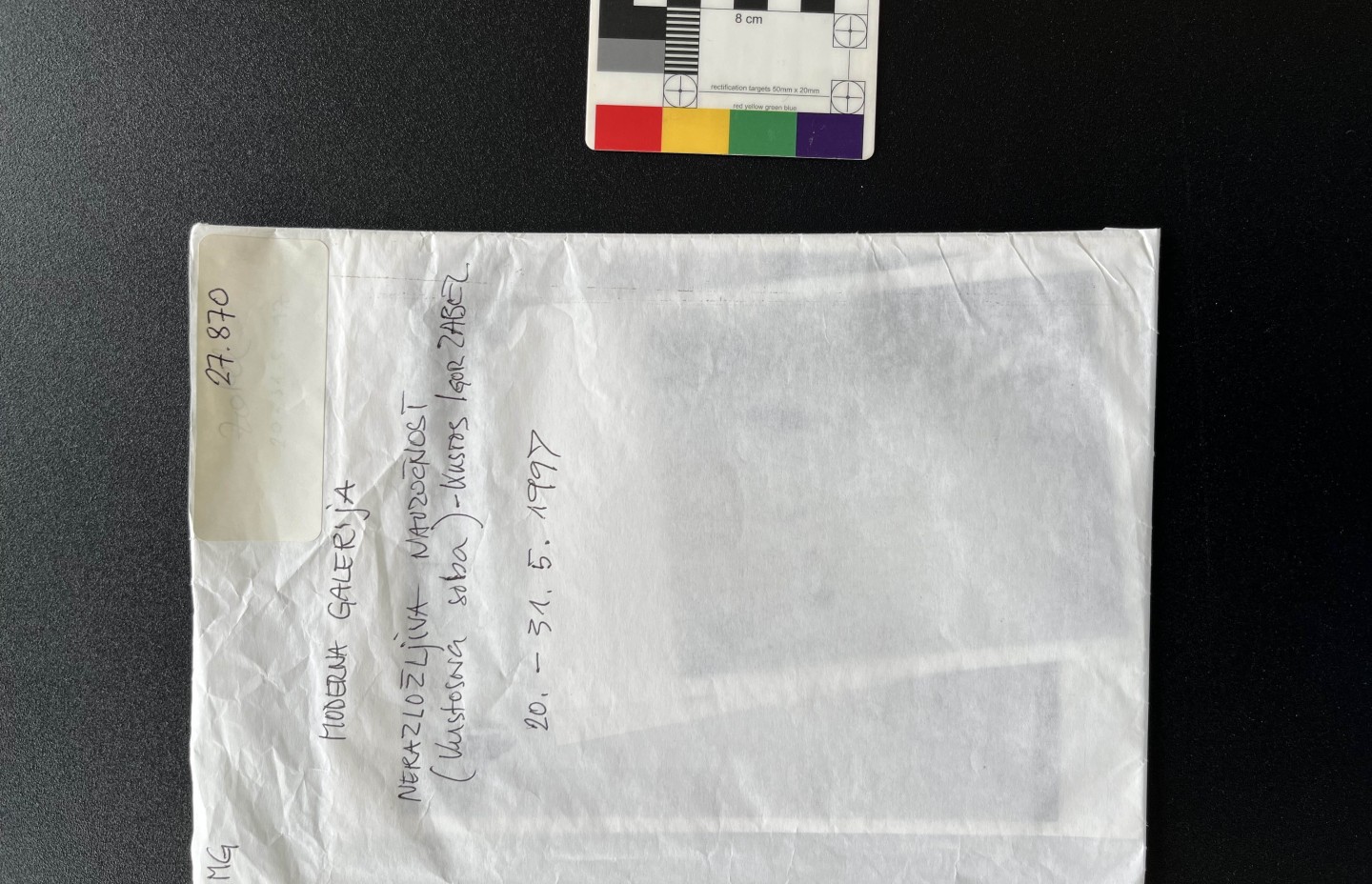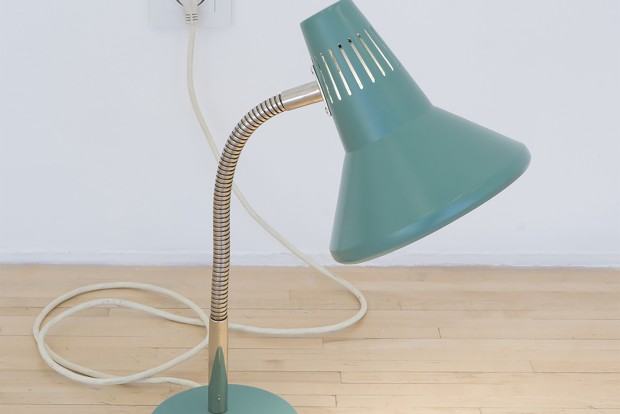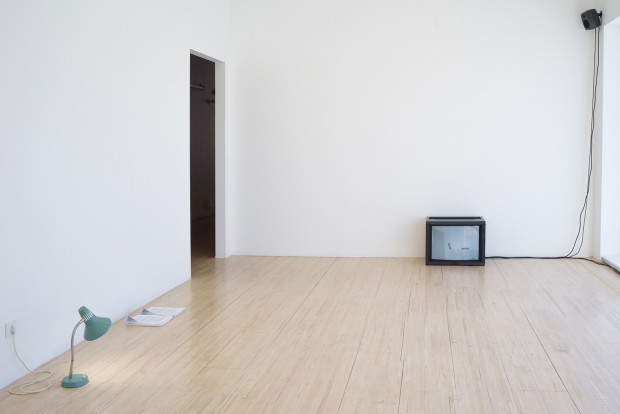
MG-1997-PRED-45
Christophe Barbeau
- Exhibition
Exhibition resulting from the program Autorésidences
Autorésidences is a remote residency program created by the AXENÉO7 artist-run centre in the exceptional context of the COVID-19 pandemic to continue to support research and development of current art practices.
Opening night on Wednesday, March 15, 2023 from 7PM to 11PM.
Music by DJ Rodrigo Medrano
Free entrance
Cash bar — Card only
Free parking
MG-1997-PRED-45
Between May 20th and 31st of 1997, Igor Zabel (1958-2005) Slovene writer, theorist, and curator at the Moderna galerija in Ljubljana, organized Inexplicable Presence (Curator’s Working Place), a 11-day exhibition hosted within a basement room of the Moderna galerija. In this intimate experiment, Zabel prompted the artists[1] with a short anecdote and a photograph as the curatorial point of departure for their contributions.
The small room was used as both the curator's temporary office and exhibition space; a space where Zabel tried a different way of exhibiting and encountering the visitors within "the peripheral, ephemeral, accidental, and arbitrary"[2], and imagined "the possibility of low-budget projects”[3], while interrogating his own role as a curator[4].
Very little visual documentation exists of this 11-day experiment. Notably, a video[5] is accessible on the web archive of the Moderna galerija; its reference number is MG-1997-PRED-45.
In this 5-minute video, the mute portrait scans each artwork from the exhibition. Handheld, the camcorder's autofocus catches the reflections from the framed works and wanders around the small room. The nearly silent walkthrough is mesmerizing, scored only by the ambient soundscape of the room’s open window.
Since viewing the video, I immediately assumed that it was Igor Zabel himself that was holding the camera (an assumption that never was confirmed). I inferred that he was filming in a manner only interpretable as accounting for a familiar knowledge of the artworks and close preexisting relationships with the artists. As a document of an exhibition, produced by its curator, Zabel’s silence felt transgressive, inviting the viewers inside a deeply personal space. This intimate gaze seduced me and my curatorial imagination.
This present exhibition, MG-1997-PRED-45, eponymous of the archival tape, is a fantasy.
The 1997 archival video is recreated in its entirety in 3D modelling. Distorted from being dreamt of, this new video is fuelled by a desire to render an inaccessible precision. Here, the original video’s soundscape is substituted by a distant field recordings from the same museum’s basement window recorded in the summer of 2022[6].
In 2020, the Igor Zabel Association for Culture and Theory published the posthumous catalogue for Inexplicable Presence, after the discovery of the self-designed layout for the planned, but never realized book. From a text titled “Letter, 21 May 1997”, a specific quote lists a triad of objects : “For the purpose of this project, I have moved the chair, the table lamp and a huge pile of papers into my temporary room in the basement.”[7] This triad represents the necessary elements for Zabel to initiate the exhibition downstairs[8]. As fantasy makers, the triad is present; invoking the memory of a curator reflecting on its own position.
The chair is from Stol Kamnik, formerly known as Remec Co., a furniture factory in Duplica, Slovenia. The design is extrapolated from a Thonet’s patents, which the factory used to fabricate. Produced, at least, until the late 1950’s, this chair must have been the original furniture of the Moderna galerija, which officially opened in 1947.
The lamp, article number 22017, was likely produced by two factories in Zagreb, TEP Zagreb and Tvornica Svjetiljaka Ivan Šikić, possibly from the 1960's until the end of the Yugoslav era.
The “huge pile of papers” must have been the necessary documents for Igor Zabel to further his institutional responsibilities in the basement of the museum. The papers, here, become a placeholder for my own voice, accounting for the responsibilities of my own fantasy.
— Christophe Barbeau
Notes
1. Dear to its curator, this exhibition included works from Heimo Zobernig, Mladen Stilinović, Uri Tzaig, Angela Grauerholz, Jochen Gerz, Jože Barši, Lewis Baltz, Suchan Kinoshita, Yuri Leiderman, and Per Kirkeby.
2. Zabel, Igor. Inexplicable presence: (curator's working place), Ljubljana: Igor Zabel Association for Culture and Theory, 2020, pp.9.
3. Ibid.
4. Zabel, Igor. “Exhibition Strategies in the 1990s : A Few Examples from Slovenia.” Igor Zabel: contemporary art theory, edited by Igor Španjol, Zurich: JRP/Ringier; Dijon: Les presses du reel, 2012, pp.126-145.
In this text from 1998, Zabel writes that Inexplicable Presence was a way to “make concrete” some of his reflections about the figure of the curator in contemporary art.
5. https://mrezni-muzej.mg-lj.si/en/networkmuseum/4/26/?artworkid=65
6. I was honored to give a lecture, entitled The Curator’s Rooms, during the symposium Exhibiting in Slovenia II, in Ljubljana. https://www.igorzabel.org/en/news/2022/Exhibiting-in-Slovenia-II
7. Zabel, Igor. Inexplicable presence: (curator's working place), Ljubljana: Igor Zabel Association for Culture and Theory, 2020, pp.11.
8. In the 2018 documentary The Curator’s Room; Igor Zabel: How to Make Art Visible?, which presented a focus on Inexplicable Presence, as a very ‘characteristic’ and ‘personal’ project for Zabel, Beti Žerovc, Slovene art historian, states that by moving his office, Zabel situated himself in the ‘belly of the institution’. This framing might refer to the potential of working within the institution in order to rethink its own norms. It calls for interrogating the structure of the museum from the inside.
Christophe Barbeau is an artist and curator. He holds a BFA from Université Laval (2015) and an MA in Curatorial Studies from the University of Toronto (2018), where he received the Reesa Greenberg Curatorial Studies Award. During his MA, his research focused on a political understanding of the figure of the curator, activated by an auctorial conception specific to that of a curatorial position of authority. His final MFA exhibition, and I am the curator of this show1 (2018), was presented at the Art Museum at the University of Toronto. Qu’avons-nous fait ? Nous nous étions dit non [...] (2019), an exhibition that takes curatorial writing as its research object, was presented in a private apartment in Toronto. For the past several years, Christophe Barbeau has also been interested in a network of artists, curators, and ideas specifically from Slovenia, and more broadly what was known as Eastern Europe during the 1990s and the 2000s. This research is taking the form of an apartment exhibition series entitled Kustosova delovna soba [The Curator’s Room] (2021–). He had the chance to present his research at the Exhibiting in Slovenia II symposium in 2022 in Ljubljana.
Acknowledgements
I would like to thank infinitely Urška Jurman and Beti Žerovc for their generosity and support of my research. I would also like to thank Mateja Kos, Igor Španjol, Ida Hiršenfelder, Jana Ferjan, Sabina Povšič, Teja Merhar, Jaka Železnikar, Rene Rusjan, Zdenka Badovinac, Josef Dabernig, Kathrin Rhomberg, Angela Grauerholz, Danijel Hocevar, Yasmine Tremblay and Michèle Thériault. Thank you to Axenéo7, M.A. Marleau, Éric Trottier, Lucile Godet and David Paquin. Thank you dearly to Pavel Pavlov, Vincent Bonin, late Emmanuelle Duret, Ralitsa Doncheva, Barbora Racevičiūtė, Maegan Broadhurst, Genne Speers, Luis Jacob, Chris Curreri, Charles Stankievech, Kate Whiteway, Ryan Ferko, Faraz Anoushahpour, Parastoo Anoushahpour, Mahshid Rafiei, Toleen Touq and Ami Xherro.








